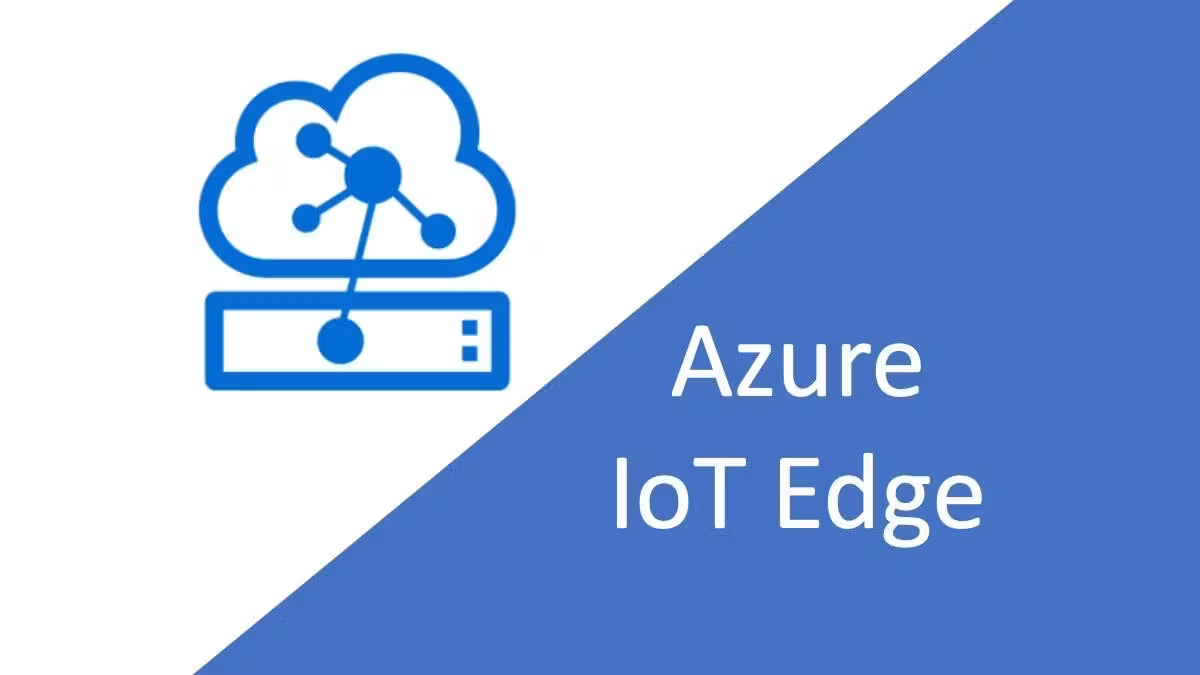Power of Azure IoT Edge: A Creative Journey into the Future
 Sumit Mondal
Sumit Mondal
Introduction:
In a world driven by digital transformation, the Internet of Things (IoT) has emerged as a game-changer, revolutionizing the way we interact with our surroundings. Amidst the vast IoT landscape, Azure IoT Edge stands out as a beacon of innovation, empowering businesses to extend the power of the cloud to the edge of their networks. In this blog post, we will embark on a creative journey to explore the depths of Azure IoT Edge, unraveling its capabilities and demonstrating its prowess through a hands-on example.
Chapter 1: Azure IoT Edge Unveiled
Azure IoT Edge is a robust platform that allows organizations to deploy cloud workloads, artificial intelligence (AI), and custom logic directly onto edge devices. By bringing the intelligence of the cloud to the edge, Azure IoT Edge facilitates real-time data analysis, reduced latency, and improved overall system performance.
Imagine a scenario where a fleet of connected devices gathers data in a remote location with limited internet connectivity. Azure IoT Edge empowers these devices to process and analyze data locally, sending only relevant insights to the cloud. This ensures efficient use of bandwidth and minimizes dependency on a continuous internet connection.
Chapter 2: The Architecture Behind the Magic
Azure IoT Edge operates on a modular architecture, enabling seamless integration of various services and functionalities. At its core, it consists of three main components:
a. Edge Modules: These are units of execution that encapsulate a specific functionality, such as data processing, analytics, or AI inferencing. Modules can be developed using programming languages like C#, Python, or Node.js.
b. Edge Runtime: The runtime is responsible for managing the deployment and execution of modules on edge devices. It ensures efficient communication between modules and facilitates seamless updates.
c. IoT Hub: The IoT Hub acts as the bridge between edge devices and the cloud. It enables secure communication, device management, and facilitates the transfer of data between the edge and the cloud.
Chapter 3: Hands-On Example: Building an Intelligent Edge Solution
To illustrate the capabilities of Azure IoT Edge, let's delve into a hands-on example – building an intelligent edge solution for predictive maintenance in an industrial setting.
Scenario: Consider a manufacturing plant where machines are equipped with sensors to monitor various parameters. The goal is to predict when a machine is likely to fail, allowing for proactive maintenance and minimizing downtime.
Steps:
Set Up Azure IoT Hub: Begin by creating an Azure IoT Hub to act as the central communication hub between edge devices and the cloud.
Create Edge Modules: Develop edge modules that capture and process data from the sensors. Use Azure Machine Learning to create a predictive maintenance model that can run locally on the edge.
Configure IoT Edge Device: Set up an edge device in the manufacturing plant and configure it to run Azure IoT Edge runtime. This device will host the edge modules responsible for data processing and predictive maintenance.
Deploy Modules to Edge Device: Deploy the developed edge modules to the edge device using Azure IoT Hub. This step ensures that the necessary intelligence for predictive maintenance is running directly on the edge.
Real-Time Monitoring: Monitor the real-time data flow and predictions generated by the edge modules. This can be visualized through Azure IoT Hub, providing insights into the health of the machines and predicting potential failures.
Implement Proactive Maintenance: Based on the predictions, schedule proactive maintenance activities for machines that are identified as likely to fail. This prevents unplanned downtime and enhances overall operational efficiency.
Chapter 4: The Future of Edge Computing with Azure IoT Edge
As we conclude our hands-on example, it's essential to reflect on the future implications of Azure IoT Edge. The platform opens the door to a myriad of possibilities, from enabling intelligent automation in manufacturing to facilitating smart cities' development.
Imagine a world where edge devices, from smart appliances to autonomous vehicles, are seamlessly integrated into the Azure IoT Edge ecosystem. This integration could redefine the way we experience and interact with technology, making our surroundings smarter, more efficient, and responsive to our needs.
Conclusion:
Azure IoT Edge stands as a testament to Microsoft's commitment to driving innovation in the IoT space. Its ability to extend the power of the cloud to the edge empowers businesses to harness the full potential of their connected devices. Through our hands-on example, we've witnessed how Azure IoT Edge can transform industries, paving the way for a future where intelligence is distributed across the digital landscape.
As we navigate the evolving landscape of IoT, Azure IoT Edge serves as a beacon, guiding us towards a future where the edge is not just a location but a realm of endless possibilities. It's time to embark on your own creative journey with Azure IoT Edge and unlock the potential of the intelligent edge.
Subscribe to my newsletter
Read articles from Sumit Mondal directly inside your inbox. Subscribe to the newsletter, and don't miss out.
Written by

Sumit Mondal
Sumit Mondal
Hello Hashnode Community! I'm Sumit Mondal, your friendly neighborhood DevOps Engineer on a mission to elevate the world of software development and operations! Join me on Hashnode, and let's code, deploy, and innovate our way to success! Together, we'll shape the future of DevOps one commit at a time. #DevOps #Automation #ContinuousDelivery #HashnodeHero